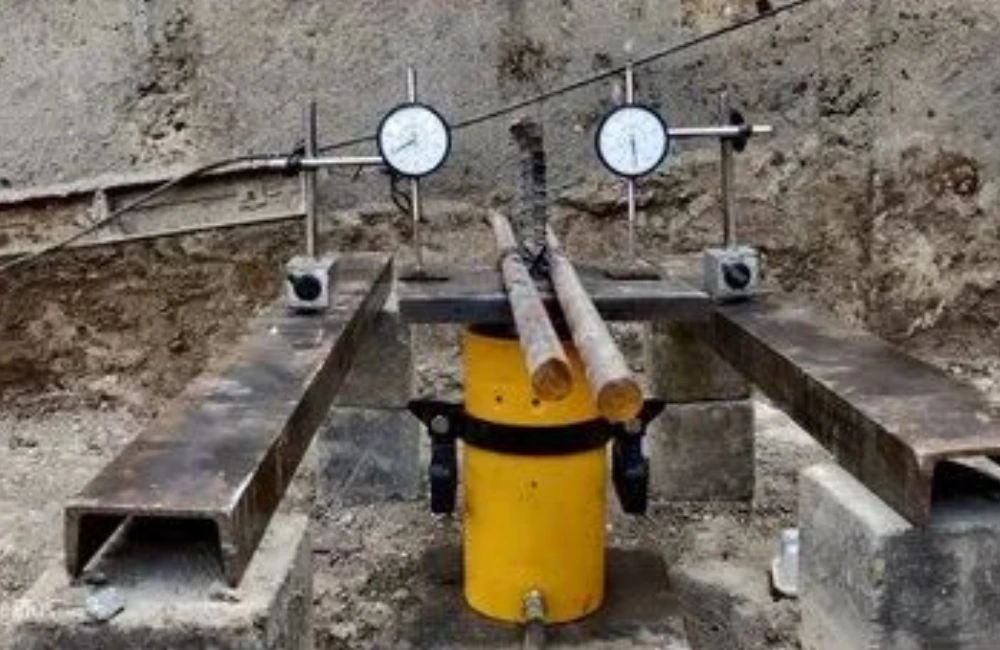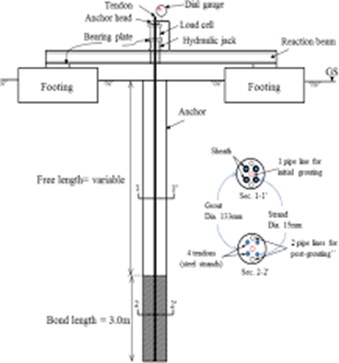Static Vertical Pile Load

ROCK ANCHOR PULLOUT LOAD TEST AS PER IS 11309 2001
A rock anchor pull-out test assesses the strength and performance of a rock bolt or anchor by measuring the force required to pull it out of the rock formation. This test is crucial for determining the working and ultimate capacities of the anchor, ensuring its suitability for structural support applications.
Here’s a more detailed explanation:
Purpose:
- Verification: To determine if an installed anchor or rock bolt meets specified performance criteria.
- Quality Control: To ensure the integrity and bonding of the anchor in the rock mass.
- Design: To assess the anchor's capacity under working loads and potential failure modes.
Comparative Analysis:
- To compare the performance of different anchor systems within the same rock type.
Test Procedure:
- Confining Pressure: A confining pressure may be applied to the rock sample, especially in laboratory settings.
- Loading: A hydraulic jack or other pulling mechanism is used to incrementally load the anchor or bolt.
- Displacement Measurement: As the load is applied, the displacement (or extension) of the anchor head is measured.
- Data Recording: Load and displacement values are recorded to create a load-displacement curve, which helps analyze the anchor's behavior.
- Failure Assessment: The test continues until the anchor yields, fractures, or a specified displacement is reached.

